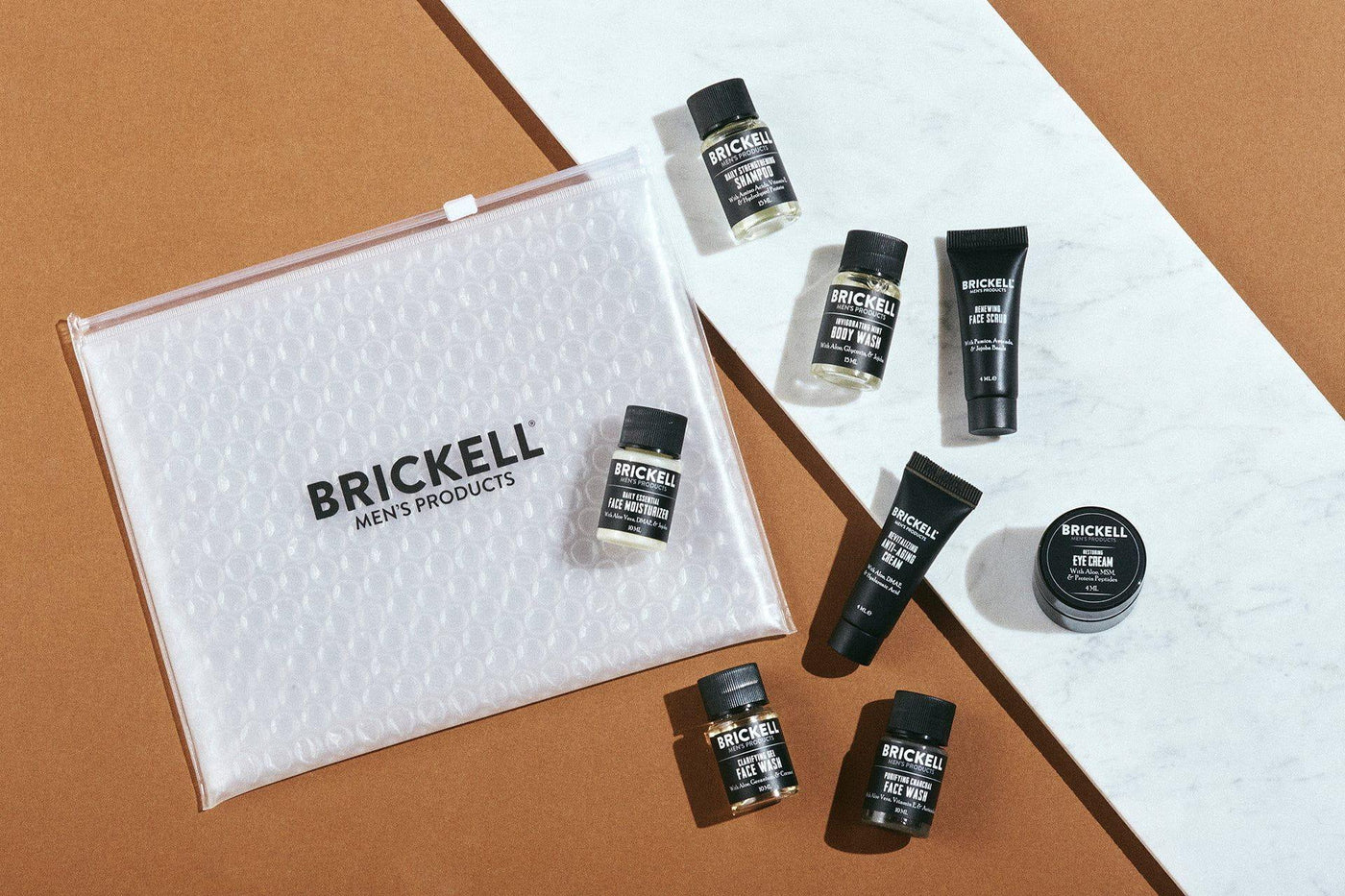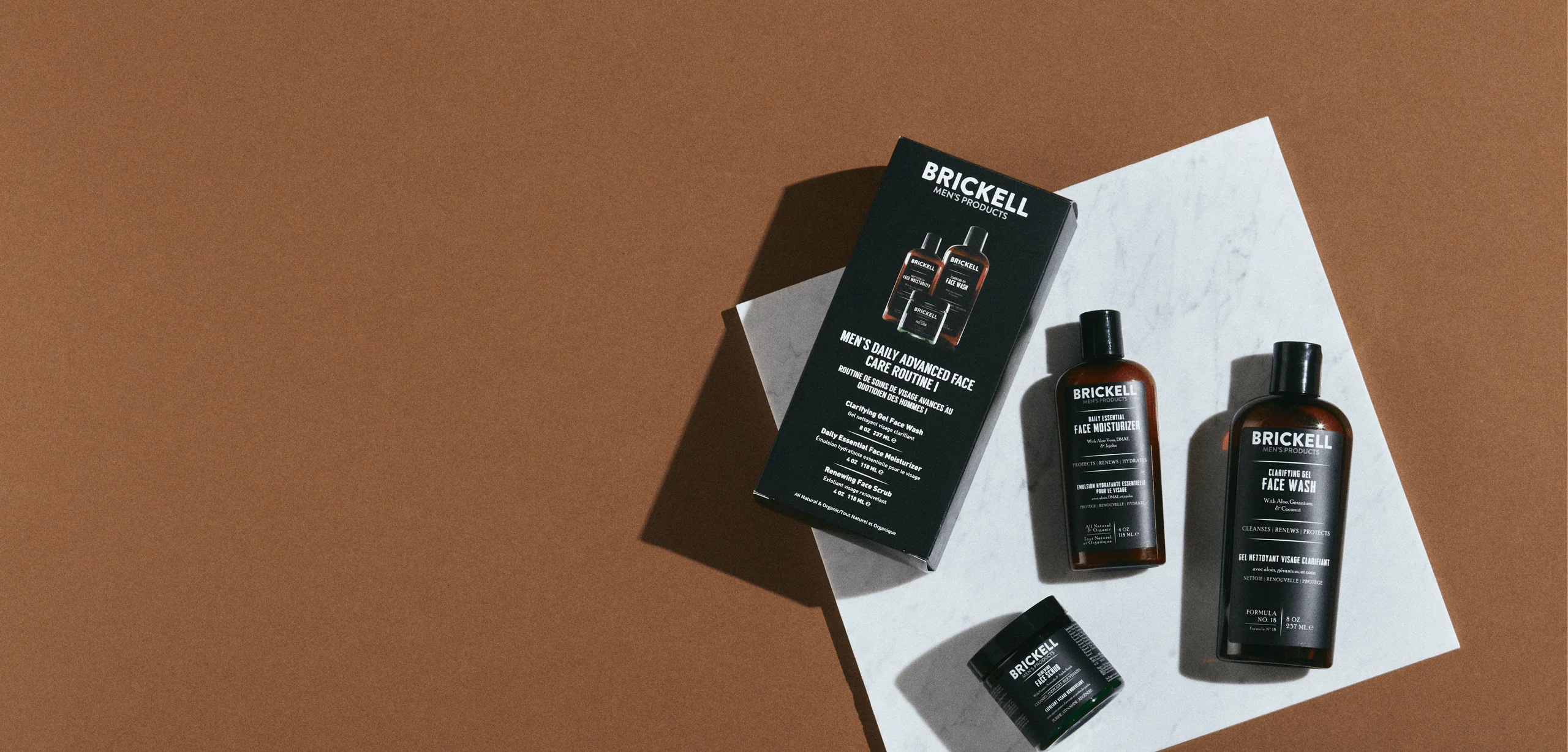The Grooming Manual
The Best Ingredients for Guys with Dry Skin

Maybe your skin is flaky, maybe it’s tight - perhaps it’s even itchy, red, or irritated. If you’ve experienced any of this, you know what’s it’s like to deal with dry skin, and you know that it can be a real pain (no pun intended).
What’s worse, dryness is often difficult to address. At its worst, it can feel like you’re just slathering some lotions onto an impenetrable cracked surface. And it may seem like nothing really works.
With the right knowledge, you can cut through the confusion and treat your dry skin right - with the ingredients it needs to stay hydrated.
Understanding Dry and Dehydrated Skin
First thing’s first: there’s a difference between dry and dehydrated skin - and it’s important to know which of the two you’re dealing with when developing your skincare routine.
Dry skin is a skin type - and if you truly have dry skin, you’ll feel it throughout your life. Here, there are a few caveats to keep in mind:
Skin dryness and dehydration can be exacerbated by dry weather, central heating, or products that are too harsh on the skin. The harsh products, in particular, can make you feel like you have really dry skin because they strip away your skin’s natural oils - but that may not be your actual skin type (take note).
If you do have the dry skin type, you will notice that you have:
- Nearly invisible pores
- Consistent problems with dullness and skin texture concerns
- Flaky or red patches
- A lack of skin elasticity
- Easily visible lines and skin congestion
You’ll also notice consistent flakiness or tightness that may also be related to psoriasis or eczema. Again, you won’t feel these things every once in a while - they’ll have been your baseline for as long as you can remember.
If this isn’t the case, it’s likely that your skin is just dehydrated. This is a temporary condition due to the effects of central heating, stripping skincare products, or lack of hydration.
Ingredients that Work for Dry and Dehydrated Skin
Both dry and dehydrated skin need some major hydration and TLC. You also need to address dryness-related conditions like fine lines and exacerbated flaking.
Moisturizers
Both dry and dehydrated skin are in urgent need of moisture. It’s best to use a combination of emollients, humectants, and occlusive ingredients to introduce moisture and seal it in.
If you’ve found in the past that some moisturizers don’t seem to work, it’s likely because they didn’t have this important combination. Here’s exactly what you should look for and why:
- Humectants: These water-loving ingredients attract water molecules - from the environment or from deeper within the body - and draw them into the skin. That increases the skin's water content and prevents trans-epidermal water loss. The most powerful natural humectant is hyaluronic acid.
- Emollients: These lighter, oil-based substances fill in the gaps between skin cells and replace missing lipids to fortify the skin. This provides a smooth, soft feeling instantly upon application. Some of the most effective emollients are oils like jojoba oil, squalane, and ceramides.
- Occlusives: These ingredients strengthen the skin’s natural barrier to prevent trans-epidermal water loss, seal in moisture, and keep environmental aggressors out.
A combination of all three is critical for long lasting skin hydration. If you're missing one or two, you're getting incomplete hydration and the product will just sit on top of your skin rather than sinking in and providing benefits.
Actives to Fight Signs of Aging
This requires both preventative ingredients - like antioxidants - and ingredients that address existing damage to your skin. Ultra-effective anti-aging ingredients include:
- Peptides: The building blocks of collagen and elastin, peptides are necessary for a full, youthful complexion.
- Vitamin C: The MVP of antioxidants, vitamin C reduces signs of aging, accelerates collagen synthesis, corrects dark spots, and resolves skin damage. It’s a must-have for dealing with dry skin woes.
- SPF: 80% of the visible signs of aging are caused by UV damage. So if you want to fight fine lines, wrinkles, and other visible signs of aging, you need to use an SPF product regularly.
Exfoliants
These ingredients fit into the anti-aging category, but they certainly deserve special attention. Gentle and consistent exfoliation is critical. During the process, dead skin cells are removed and active ingredients and moisturizers are better able to penetrate the skin.
Over time, regular exfoliation leads to visible benefits like more vivid skin, a more balanced skin tone, fewer breakouts, and more. Ideally, use gentle exfoliating ingredients like:
- Glycolic Acid: This chemical exfoliant is gentle enough for everyday use. Over time, using glycolic resolves common dry skin concerns by fading dark spots, cleaning out pores, and revealing healthier skin.
- Jojoba Beads: This gentle physical exfoliant uses small particles to scrub away dead skin and clean out your pores - but won't tear or irritate the skin.
Emollients and Occlusives to Repair Your Skin’s Natural Barrier
Finally, you’ll want to apply face oils to seal everything in and help your active ingredients penetrate the skin. Here, we recommend oils like:
- Squalane
- Camellia oil
- Marula oil
- Jojoba oil
Unlike other options (like coconut oil) these options are non-comedogenic, meaning they’ll moisturize the skin without irritating it or clogging pores.

